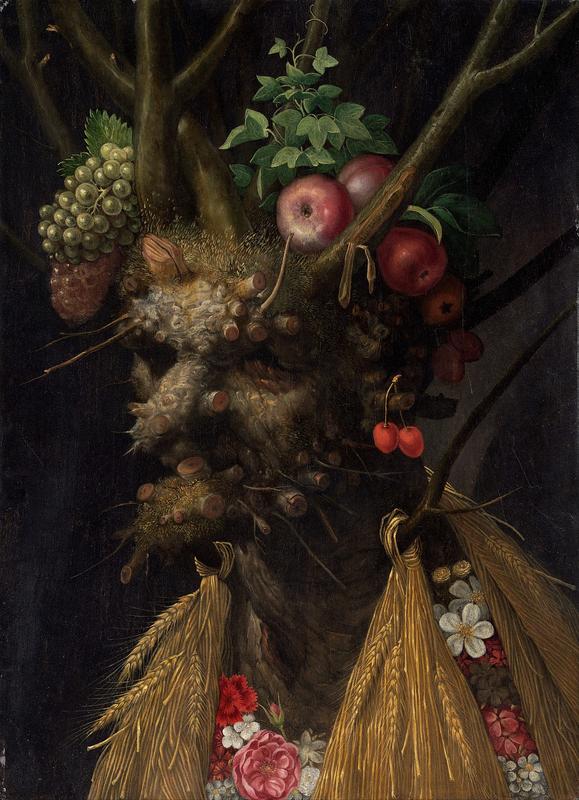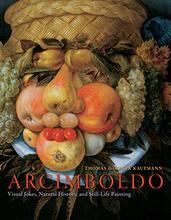More about Four Seasons in One Head
- All
- Info
- Shop

Contributor
Throughout the 20th century, nobody knew about Arcimboldo's Four Seasons in One Head, except, maybe, the housekeeping staff on a large English estate.
The painting belonged to the family of a Ms. Stott, who uncovered it in 2006. This seems to be the first public documentation of the painting since Giovanni Cortoni bought it 350 years earlier. It just goes to show you that if you want to make some great "discoveries," you should make friends with hoarders. Arcimboldo, by the time he did Four Seasons in One Head, had already done heads for each of the four seasons; this is his Greatest Hits album.
After an illustrious career painting in the Vienna and Prague courts of the House of Habsburg, making the emperors and their entourages laugh with his meticulously detailed caricatures, Arcimboldo went back home to Milan for his last few years, and painted the Four Seasons in One Head. The painting was a gift for his friend, Gregorio Comanini, whose book Il Figino gives, in a dialogue format, some truly ancient theories of art, and speaks of Arcimboldo in glowing terms. For people today, Arcimboldo is a clever artist, but for Comanini's characters, and many people of his time and place, Arcimboldo is a magician, tapping into the powers of the dream-world and enchanting his viewers. This was before the magic of Instagram filters—if Comanini had been able to see a live image of himself with cat ears, he might have lost interest in Arcimboldo. "Sleep has three ministers," writes Comanini, paraphrasing Ovid: Morpheus, who takes the shape of humans, Phobetor, who simulates animals, and Phantasos, who can become inanimate objects. Arcimboldo "knows how to perform magic and transformations just as they do," he writes.
One of Comanini's favorite paintings by Arcimboldo is the cruel practical joke called Possibly Ulrich Zasius, which shows Zasius, a court colleague of Arcimboldo, with his face made out of fish, parodying the raw, disfigured shape of Zasius's face, due to his advanced syphilis. For those who think Four Seasons in One Head is an unflattering self-portrait of an elderly man, just know that Arcimboldo was able to take it as well as dish it out.
Sources
- A Tour Through Some Parts of Istria, Carniola, Styria, Austria, the Tyrol, Italy and Sicily, in the Spring of 1814. London: Gale & Fenner, 1815.
- Anderson, Ann Doyle. The Figino, Or, On the Purpose of Painting: Art Theory in the Late Renaissance. Toronto: University of Toronto Press, 2001.
- Bensaude-Vincent, Bernadette. The Artificial and the Natural: An Evolving Polarity. Cambridge: MIT Press, 2007.
- "Four Seasons in One Head." Google Arts and Culture, https://artsandculture.google.com/asset/four-seasons-in-one-head/WwHACW….
- Kaufmann, Thomas DaCosta. Arcimboldo: Visual Jokes, Natural History, and Still-Life Painting. Chicago: University of Chicago Press, 2009.
- National Gallery of Art Board of Trustees. An Eye for Art: Focusing on Great Artists and Their Work. Chicago: Chicago Review Press, 2013.
- Vogel, Carol. "Arcimboldo Work Bought in Time for Exhibition." The New York Times, Sep. 17, 2010, https://www.nytimes.com/2010/09/17/arts/design/17vogel.html.















Giuseppe Arcimboldo has put four different seasons into one head, which he uses apples to represent spring, green plants with leaf on it as summer, the grape and tassel are fall, and the branches without leave are winter.